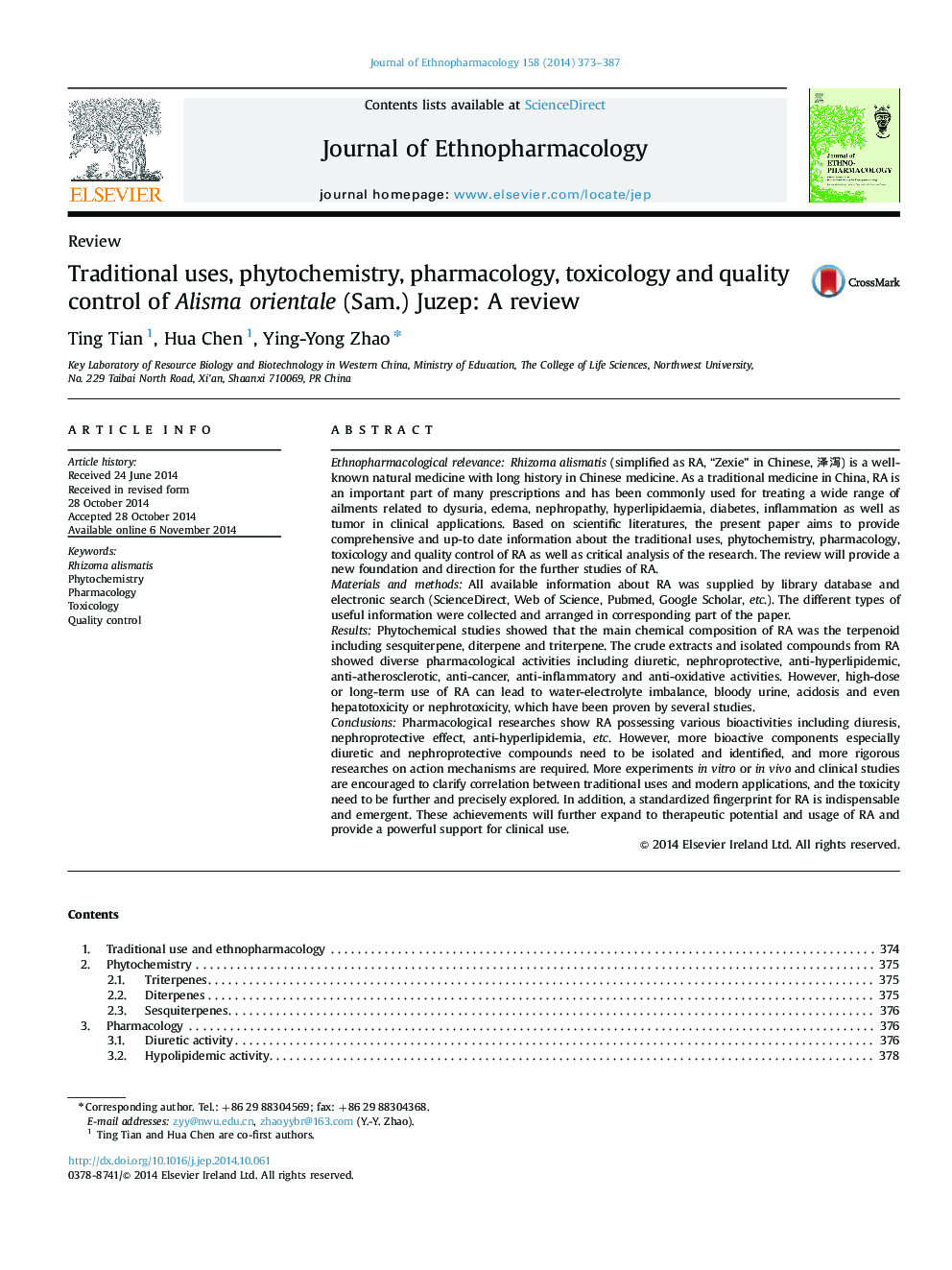| کد مقاله | کد نشریه | سال انتشار | مقاله انگلیسی | نسخه تمام متن |
|---|---|---|---|---|
| 5835916 | 1123933 | 2014 | 15 صفحه PDF | دانلود رایگان |

Ethnopharmacological relevanceRhizoma alismatis (simplified as RA, “Zexie” in Chinese, 泽泻) is a well-known natural medicine with long history in Chinese medicine. As a traditional medicine in China, RA is an important part of many prescriptions and has been commonly used for treating a wide range of ailments related to dysuria, edema, nephropathy, hyperlipidaemia, diabetes, inflammation as well as tumor in clinical applications. Based on scientific literatures, the present paper aims to provide comprehensive and up-to date information about the traditional uses, phytochemistry, pharmacology, toxicology and quality control of RA as well as critical analysis of the research. The review will provide a new foundation and direction for the further studies of RA.Materials and methodsAll available information about RA was supplied by library database and electronic search (ScienceDirect, Web of Science, Pubmed, Google Scholar, etc.). The different types of useful information were collected and arranged in corresponding part of the paper.ResultsPhytochemical studies showed that the main chemical composition of RA was the terpenoid including sesquiterpene, diterpene and triterpene. The crude extracts and isolated compounds from RA showed diverse pharmacological activities including diuretic, nephroprotective, anti-hyperlipidemic, anti-atherosclerotic, anti-cancer, anti-inflammatory and anti-oxidative activities. However, high-dose or long-term use of RA can lead to water-electrolyte imbalance, bloody urine, acidosis and even hepatotoxicity or nephrotoxicity, which have been proven by several studies.ConclusionsPharmacological researches show RA possessing various bioactivities including diuresis, nephroprotective effect, anti-hyperlipidemia, etc. However, more bioactive components especially diuretic and nephroprotective compounds need to be isolated and identified, and more rigorous researches on action mechanisms are required. More experiments in vitro or in vivo and clinical studies are encouraged to clarify correlation between traditional uses and modern applications, and the toxicity need to be further and precisely explored. In addition, a standardized fingerprint for RA is indispensable and emergent. These achievements will further expand to therapeutic potential and usage of RA and provide a powerful support for clinical use.
324
Journal: Journal of Ethnopharmacology - Volume 158, Part A, 2 December 2014, Pages 373-387